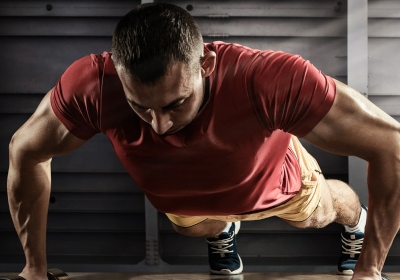VIDEO
Barbell Wrist Curl
- Wrists
- Forearms
Level:Intermediate
Trainer:Nick Taylor
Equipment:Barbell
Pace the barbell on the table or bench. Now, back up to the barbell and take it with your hands behind your back (your palms are facing away from your body). Lift the barbell and move away from the table. From here, raise the barbell using your wrist strength. Continue to go up and down with the barbell, using only your wrist strength. This movement will give you a powerful pump in your forearms.
save to ...
RECOMMENDED FOR YOU
ARTICLES
Push-ups, strength exercises, gymnastic elements on rings and a horizontal bar, handstand - all these exercises require strong and flexible wrists. Let’s discuss how to develop your wrist strength and do exercises without pain and discomfort.
The wrist is a movable connection of the bones of the forearm and hand of a person. It is formed by the extended and concave carpal articular surface of the radius and a medially located triangular cartilaginous disc, representing a concave articular surface articulating with the convex proximal (located closer to the body) articular surface of the bones of the first row of the wrist: scaphoid, lunate and trihedral.
The proximal row is connected with the exchange cyst behind the additional exchange wrist joint. The skin row is set in an arch, bent proximally and distally bent. On the long sides of the wrists of the vignutia set up the carpal canal, we will fix the flexor retinaculum. The proximal row is connected with the surfaces of the exchange brush and the distal row. In the proximal row, the dermal cyst can be surrounded by an undisclosed ruffle: for example, it is more like the fate of the unprotected midget steel, which can be easily joined from the trapezoidal and trapezoidal style. The cysts of the distal row, on the other hand, are more rigidly fastened, so that the whole row collapses at once with the pastoral cysts.
Some sports require strong wrists. Wrist strength should be developed in parallel with flexibility. This will help you do exercises that require not only good grip but also joint mobility. Exercises for the wrists are also useful for people who are far from sports. Warming up and stretching the wrists can help avoid tunnel syndrome - the compression of the median nerve between the bones and tendons of the wrist. Warming up will help relieve tension and will be excellent pain prevention.
The number of eight wrist cysts can be divided into two transverse rows (proximal and distal), or into three later colonies.
Training
Bear Crawl Lunge. Move forward by moving the right hand and the left leg with a crawling movement. Just after placing weight on the right hand and left leg, turn the sides and move the left hand and right leg forward. Keep the body pretty low and continue with crawling movements. Imagine that you are crawling beneath a low net.
Half Handstand Variation. Begin with the downward-facing dog position. Walk your feet in closer to your hands. Keep your left foot on the ground, lifting onto the ball, and begin bending the knee. Lift the right leg and straighten it behind you. After taking a few hops, jump off the bent leg and lift the straight leg toward vertical. Keep flexing your lifted foot for engagement. Now, try to bring both heels to the wall. Keep breathing deeply while your head is down between your upper arms. Remember to engage your legs and reach up through your heels. Walk your legs down the wall. Then get back to the starting position with your feet on the ground. Make a deep squat and jump out.
Inchworm Variation. Put your hands on the ground and your feet - on the elevated surface (a bench). Start walking your hands out, as far as you can keeping your legs straight throughout the movement. Make a pause. Walk your hands back up to the starting position.
Read more
SAVE TO ...

